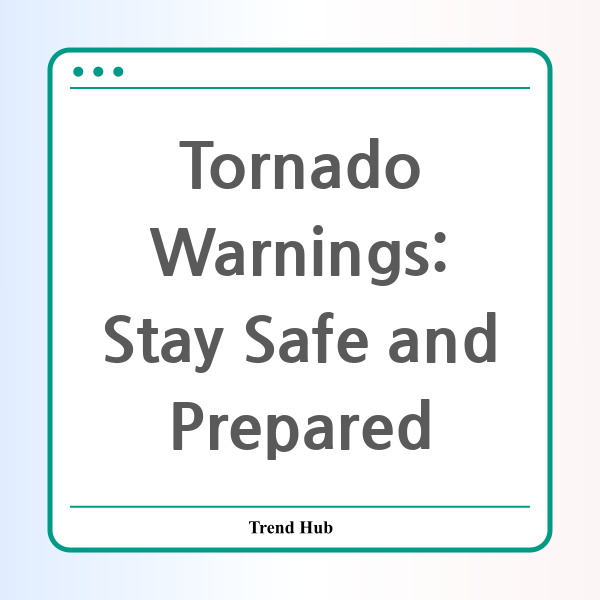* This website participates in the Amazon Affiliate Program and earns from qualifying purchases.

As severe weather patterns continue to affect many regions across the United States, understanding tornado warnings is crucial for ensuring your safety. Recently, a tornado warning was issued for parts of Lauderdale and Colbert counties in Alabama, highlighting the need for preparedness during storm season. This blog post will guide you through the essential differences between tornado watches and warnings, what steps to take during a tornado alert, and how to prepare your family for severe weather.
What to Know About Tornadoes
Tornadoes can form quickly and unexpectedly, making it imperative to stay informed and ready to act. The National Weather Service (NWS) often provides updates on potential storm threats and will issue warnings when a tornado is imminent. Understanding the terminology they use is vital:
- Tornado Watch: Issued when conditions are favorable for tornado development. This means you should remain vigilant and be prepared to take action.
- Tornado Warning: This indicates that a tornado has been spotted or indicated by radar, meaning immediate action is necessary to protect yourself.
Why Is It Important to Know the Difference?
Knowing the difference between a tornado watch and a tornado warning can be a matter of life and death. A watch can last several hours, providing you with time to prepare. In contrast, a warning requires swift action.
Steps to Take During a Tornado Warning
When a tornado warning has been issued, take the following steps immediately:
- Seek Shelter: Find a basement or an interior room on the lowest floor of a sturdy building, such as a home or a school. If you are in a mobile home, abandon it for a more substantial shelter.
- Avoid Windows: Keep away from windows to prevent injury from shattered glass and debris.
- Protect Your Head: Use your arms, or find something sturdy to protect your head from flying objects.
Safety Guidelines for Specific Situations
Here are some tailored safety tips depending on your location during a tornado warning:
- At Home: Go to the lowest level or a storm cellar if available. Bring your pets if time allows.
- At Work or School: Follow designated tornado drill protocols which usually involve moving to an interior room or hallway.
- Outdoors: Quickly find a sturdy building nearby. If that’s not possible, lie flat in a low area, covering your head.
- In a Vehicle: If you are driving, look for a nearby building to take shelter. If no shelter is available, you may need to lie low in a ditch, covering your head.
Prepare Your Family for Tornado Season
Preparation is key to ensuring your family's safety. Here are some essential steps you should take:
- Create an Emergency Plan: Make sure all family members know where to go and what to do during severe weather.
- Conduct Safety Drills: Regular drills can help everyone remember the steps to take during a tornado warning.
- Stock Emergency Supplies: Keep a supply of water, food, medications, and a flashlight in your safe location.
Stay Informed and Alert
Keep an eye on local weather forecasts and alerts. Make sure you have an app or a NOAA weather radio that provides live updates. Registration for local alert systems can ensure that you receive timely notifications regarding severe weather.
In conclusion, when it comes to tornado safety, knowledge and preparation are your best tools. By understanding the differences between tornado watches and warnings, taking immediate action during alerts, and preparing in advance, you can significantly enhance your safety and that of your loved ones during tornado season. Remember, when a warning is issued, don't wait—act swiftly to find shelter and protect yourself!
* This website participates in the Amazon Affiliate Program and earns from qualifying purchases.